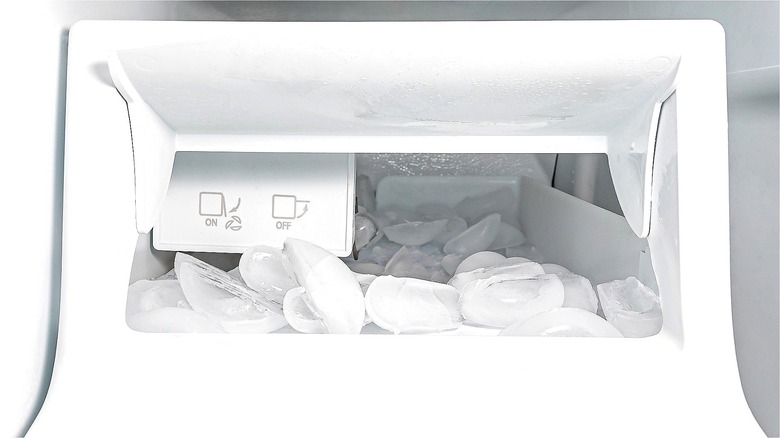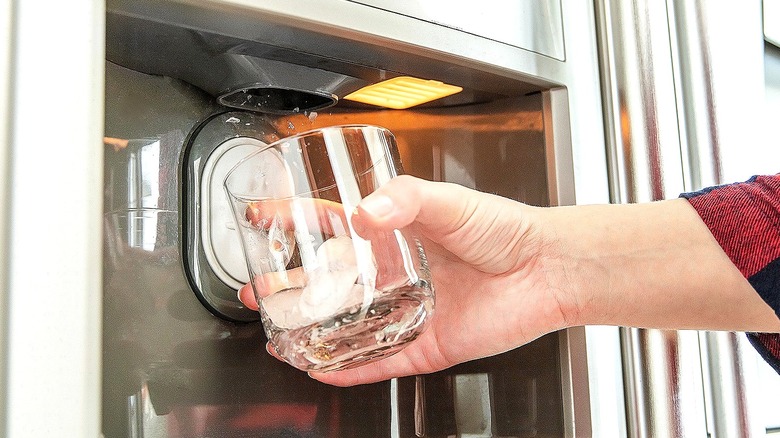The Best Way To Clean Out Your Fridge's Dirty Ice Maker
Having an ice machine in your fridge is pretty darn convenient — you can skip the ice trays (or alternatives that let you make ice cubes without a tray) and just let your refrigerator do the work. However, cleaning your ice maker from time to time is a necessary task, and dismantling such an intricate part of your fridge can seem daunting. Luckily, learning how to follow just a few simple steps can make this chore less burdensome.
Before rolling up your sleeves to clean your grimy ice maker, gather some essential cleaning supplies such as a bowl of warm soapy water, a sponge, and some cleaning cloths. Start by going through your freezer and discarding any old or expired food. Residual odors from opened or spoiled food products can affect the taste of your ice. Once you have this task squared away, unplug your refrigerator to keep your ice maker from running throughout the cleaning process.
Next, remove the ice basin and discard all ice cubes. If you're unsure how to properly disconnect your ice bin, consult your owner's manual (you can likely find it online on the manufacturer's site if you threw it away years ago). Wipe down any parts of your ice maker that can't be removed with a warm cloth. Once the bin is completely empty, gently wash the interior with warm soapy water. While you can certainly pop your refrigerator shelves in the dishwasher for an odor-busting clean, using this appliance to clean any part of your ice maker is not recommended.
Crucial steps you shouldn't skip when cleaning your ice maker
Once your ice maker has been successfully washed and dried, check your water filter before you reassemble all of the parts. An up-to-date filter is essential in producing clean-tasting ice. Aim to replace your refrigerator's filter every six months to avoid buildup of unwanted bacteria or even mold.
If you end up seeing anything funky in your ice, to achieve the deepest clean possible, you might be able to disconnect the water line to your ice maker and use vinegar to clean your system's ice dispenser chute. However, for extra caution, consult your refrigerator's manual before using vinegar and never use it on stainless steel. When all is said and done and your ice maker has been added back to your freezer, just plug your fridge back in. Discard the first few batches of newly-made ice cubes to ensure no residual tastes or odors remain (and get accidentally added to your drinks!).
Reviewing all of this advice may lead you to wonder: How often do you really need to be cleaning your fridge? A general rule that's easy to remember is to clean your whole ice maker and the rest of your fridge every time you change your water filter, and vice-versa. Taking the time to unplug this appliance and wash all parts is the easiest path to better-tasting ice.


